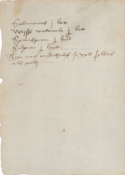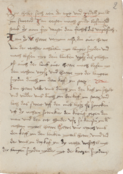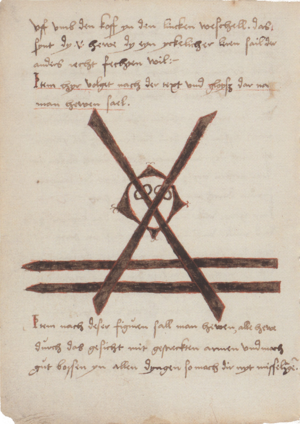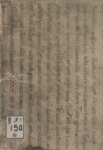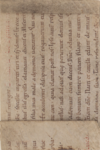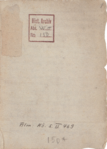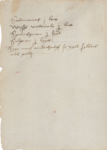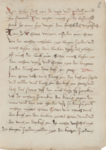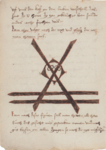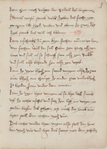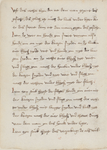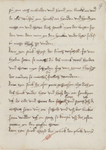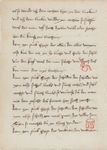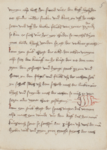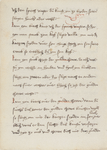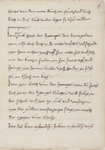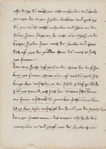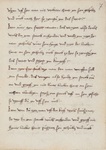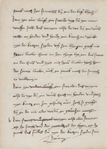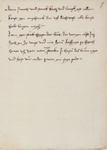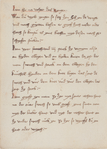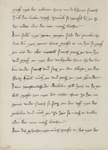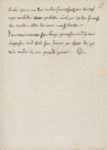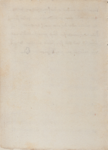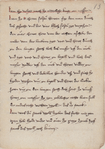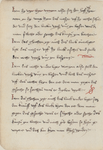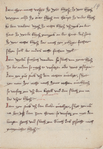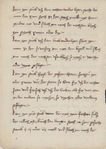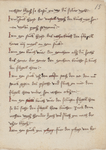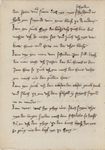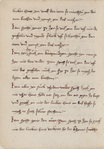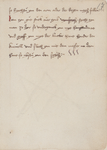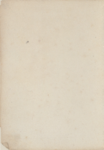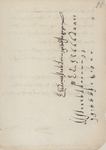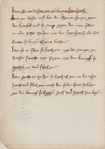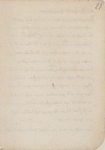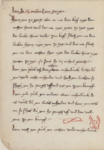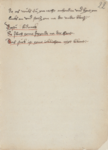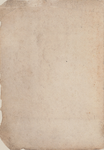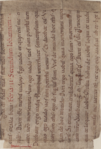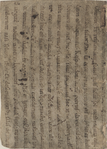|
|
You are not currently logged in. Are you accessing the unsecure (http) portal? Click here to switch to the secure portal. |
Difference between revisions of "Kölner Fechtregeln (MS Best.7020 (W*)150)"
| Line 60: | Line 60: | ||
{| class="treatise" | {| class="treatise" | ||
|- | |- | ||
| − | ! id="page" | | + | ! id="page" | 1r |
| + | | Blank | ||
| + | |||
| + | |- | ||
| + | ! 1v | ||
| {{treatise begin | | {{treatise begin | ||
| title = Metallurgical recipe | | title = Metallurgical recipe | ||
| Line 71: | Line 75: | ||
! <p>Transcription<br/>by [[Dieter Bachmann]]</p> | ! <p>Transcription<br/>by [[Dieter Bachmann]]</p> | ||
| − | |||
| − | |||
| − | |||
| − | |||
|- | |- | ||
| | | | ||
| | | | ||
| − | | | + | | {{paget|Page:MS Best.7020 W-150|01v|png}} |
| − | |||
| − | |||
| − | |||
| − | |||
| − | |||
| − | |||
| − | |||
|} | |} | ||
| Line 105: | Line 98: | ||
|- | |- | ||
| | | | ||
| − | | '''Here begins the text and recital of the long sword. Firstly, make good position<ref>pose,stance</ref> and stretch your arms free. Whatever you then fence, prepare yourself thusly. | + | | <p>'''Here begins the text and recital of the long sword. Firstly, make good position<ref>pose,stance</ref> and stretch your arms free. Whatever you then fence, prepare yourself thusly.</p> |
| − | + | | {{section|Page:MS Best.7020 W-150 02r.png|1|lbl=02r}} | |
|- | |- | ||
| | | | ||
| − | | Item. Understand the . | + | | <p>Item. Understand the .5. hews as so: The over-hew from the right shoulder with the long edge and make [a] positioning with your left foot. Also similarly, the left over-hew make position with the right foot and hew with the long edge plunging through your opponent’s head, etc.</p> |
| − | | | + | | {{section|Page:MS Best.7020 W-150 02r.png|2|lbl=-}} |
|- | |- | ||
| | | | ||
| − | | Item. Hew again around through to his head in the squint<ref>‘Schielen II’, oblique, like a schielhau. alt: shield. alt: dishonestly. alt: scoldingly</ref>and around again through his head in the plunge<ref>Two cuts, first with the back edge like a schielhau, the second with the back edge like the stürtzhau</ref> and lay the sword upon your back, allow it to sink to the right side. Sweep out<ref> Auskehren</ref> your pommel against your opponent and your point behind, thus you arrive in the right middle-hew. Hew before yourself, around the head into the left middle-hew and again around into the head into the right changer with the long edge down. [Hew] with the short edge up around the head into the left change. These are the four hews. One shall learn each if they otherwise wish to fence properly, etc | + | | <p>Item. Hew again around through to his head in the squint<ref>‘Schielen II’, oblique, like a schielhau. alt: shield. alt: dishonestly. alt: scoldingly</ref>and around again through his head in the plunge<ref>Two cuts, first with the back edge like a schielhau, the second with the back edge like the stürtzhau</ref> and lay the sword upon your back, allow it to sink to the right side. Sweep out<ref> Auskehren</ref> your pommel against your opponent and your point behind, thus you arrive in the right middle-hew. Hew before yourself, around the head into the left middle-hew and again around into the head into the right changer with the long edge down. [Hew] with the short edge up around the head into the left change. These are the four hews. One shall learn each if they otherwise wish to fence properly, etc.</p> |
| − | | | + | | |
| + | {{section|Page:MS Best.7020 W-150 02r.png|3|lbl=-|p=1}} {{section|Page:MS Best.7020 W-150 02v.png|1|lbl=02v|p=1}} | ||
|- | |- | ||
| rowspan="4" | [[File:MS Best.7020 W-150 02v.png|300px|center]] | | rowspan="4" | [[File:MS Best.7020 W-150 02v.png|300px|center]] | ||
| − | | '''Item. The text and gloss follows hereafter [on how] one shall hew.''' | + | | <p>'''Item. The text and gloss follows hereafter [on how] one shall hew.'''</p> |
| − | | | + | | {{section|Page:MS Best.7020 W-150 02v.png|2|lbl=-}} |
|- | |- | ||
| − | | Item. One shall hew according to these figures, all hews through the face with outstretched arms and make good position in all things, so you do not doubt yourself | + | | <p>Item. One shall hew according to these figures, all hews through the face with outstretched arms and make good position in all things, so you do not doubt yourself.</p> |
| − | | | + | | {{section|Page:MS Best.7020 W-150 02v.png|3|lbl=-}} |
|- | |- | ||
| − | | < | + | | <p>Item. The recital of the longsword follows hereafter.</p> |
| − | Whatever you wish to deploy strongly, | + | |
| − | Fence that with your entire body | + | <p>''Whatever you wish to deploy strongly,<br/>Fence that with your entire body,<br/>Both under and over.<br/>Execute the two things strongly, that I will praise.''</p> |
| − | Both under and over | + | | {{section|Page:MS Best.7020 W-150 03r.png|1|lbl=03r}} |
| − | Execute the two things strongly, that I will praise.</ | ||
| − | | | ||
| − | |||
| − | |||
| − | |||
| − | |||
|- | |- | ||
| − | | < | + | | <p>''Item. If you frighten easily,<br/>Do not learn any fencing.''</p> |
| − | Do not learn any fencing.</ | ||
| − | |||
| − | |||
| − | |||
| − | |||
| − | + | <p>Whoever wishes to fence, they shall have a heart of a lion and shall also see as sharply as a falcon and shall also be as agile as a bird.<ref>A proverb similar to the one also found in Kal (Cgm 1507, 6r)</ref></p> | |
| + | | {{section|Page:MS Best.7020 W-150 03r.png|2|lbl=-}} | ||
|- | |- | ||
| | | | ||
| − | | Item. Understand the four openings in the sword thusly: The two over-openings on the head, the other two under-openings to both sides below the arms. | + | | <p>Item. Understand the four openings in the sword thusly: The two over-openings on the head, the other two under-openings to both sides below the arms.</p> |
| − | | | + | | {{section|Page:MS Best.7020 W-150 03r.png|3|lbl=-}} |
|- | |- | ||
| | | | ||
| − | | Item. Also understand the four liers thusly: Lay your sword upon the right shoulder and set your body<ref>alt: lift. lyff is a variant spelling of lupf/luft, lauf and leib. Lupf is a quick starting movement. Luft is a lift. Leib is a body. Lauf is a run.</ref> in the scales with good position, Also similarly is the left over-lier, place your right foot forward. | + | | <p>Item. Also understand the four liers thusly: Lay your sword upon the right shoulder and set your body<ref>alt: lift. lyff is a variant spelling of lupf/luft, lauf and leib. Lupf is a quick starting movement. Luft is a lift. Leib is a body. Lauf is a run.</ref> in the scales with good position, Also similarly is the left over-lier, place your right foot forward.</p> |
| − | | | + | | {{section|Page:MS Best.7020 W-150 03r.png|4|lbl=-}} |
|- | |- | ||
| | | | ||
| − | | Understand the right under-lier thusly: place your left foot forward and lay the sword with the hilt upon the right leg, the point against the face of the opponent. Also similarly the left under-lier: turn the point of the sword against the face of the opponent. | + | | <p>Understand the right under-lier thusly: place your left foot forward and lay the sword with the hilt upon the right leg, the point against the face of the opponent. Also similarly the left under-lier: turn the point of the sword against the face of the opponent.</p> |
| − | | | + | | |
| + | {{section|Page:MS Best.7020 W-150 03r.png|5|lbl=-|p=1}} {{section|Page:MS Best.7020 W-150 03v.png|1|lbl=03v|p=1}} | ||
|- | |- | ||
| | | | ||
| − | | Item. Understand the four bindings-on in the sword thusly: Bind-on him with the short edge upon the left over-opening, tread forward and bind him with the long edge upon the right over-opening, tread forward and strike toward the left under-opening with the short edge and tread forward and strike toward the right under-opening with the flat. | + | | <p>Item. Understand the four bindings-on in the sword thusly: Bind-on him with the short edge upon the left over-opening, tread forward and bind him with the long edge upon the right over-opening, tread forward and strike toward the left under-opening with the short edge and tread forward and strike toward the right under-opening with the flat.</p> |
| − | | | + | | {{section|Page:MS Best.7020 W-150 03v.png|2|lbl=-}} |
|- | |- | ||
| | | | ||
| − | | Item. One play called the wing.<ref>The Wing Hew in accordance with Hans Sach’s account, flügel; appears in Pauernfeindt; '''“Wing [La Noble Science des Ioueurs Despee (1538): ‘Of the Flight’]''' Wing is taken from the High Guard or High Point, then initially strike from the Day to the left ear, then another from below whilst treading your left side, the thirdly strike backwards at the head.” Interestingly however, Duëz’s '''Französische Grammatica''' mentions on p531 that the translation of “l’epaule, le Flanc” in French is “der Flügel/der Streich”.</ref> Bind him above with the short edge and strike him toward the right under-opening with the long edge and quickly with the short edge toward the over-opening and hew through from the man into the left under-lier. | + | | <p>Item. One play called the wing.<ref>The Wing Hew in accordance with Hans Sach’s account, flügel; appears in Pauernfeindt; '''“Wing [La Noble Science des Ioueurs Despee (1538): ‘Of the Flight’]''' Wing is taken from the High Guard or High Point, then initially strike from the Day to the left ear, then another from below whilst treading your left side, the thirdly strike backwards at the head.” Interestingly however, Duëz’s '''Französische Grammatica''' mentions on p531 that the translation of “l’epaule, le Flanc” in French is “der Flügel/der Streich”.</ref> Bind him above with the short edge and strike him toward the right under-opening with the long edge and quickly with the short edge toward the over-opening and hew through from the man into the left under-lier.</p> |
| − | | | + | | {{section|Page:MS Best.7020 W-150 03v.png|3|lbl=-}} |
|- | |- | ||
| | | | ||
| − | | Item. One play called the enticement<ref>gamble, entice, pull to and fro</ref>. Act as if you wish to bind-on him right and bind-on him left and act as if you wish to bind-on him left and bind-on him right and hew yourself from the man strongly with the long edge into the left under-lier so that you are not to be found open. | + | | <p>Item. One play called the enticement<ref>gamble, entice, pull to and fro</ref>. Act as if you wish to bind-on him right and bind-on him left and act as if you wish to bind-on him left and bind-on him right and hew yourself from the man strongly with the long edge into the left under-lier so that you are not to be found open.</p> |
| − | | | + | | |
| + | {{section|Page:MS Best.7020 W-150 03v.png|4|lbl=-|p=1}} {{section|Page:MS Best.7020 W-150 04r.png|1|lbl=04r|p=1}} | ||
|- | |- | ||
| | | | ||
| − | | Item. One play is called the changing-through. Freely from both sides, so that you make the opponent fully baited<ref>beiten: abide. In this sense to trick someone into buying a feint.</ref> and hew freely from one opening to another with stepping, so that [you] may freely wander. | + | | <p>Item. One play is called the changing-through. Freely from both sides, so that you make the opponent fully baited<ref>beiten: abide. In this sense to trick someone into buying a feint.</ref> and hew freely from one opening to another with stepping, so that [you] may freely wander.</p> |
| − | | | + | | {{section|Page:MS Best.7020 W-150 04r.png|2|lbl=-}} |
|- | |- | ||
| | | | ||
| − | | Item. One play is called the Iron Gate. Lay yourself in the left under-lier and let your point sink to the ground and hew the wing and sweep forward from the right side in the squint<ref>obliquely, alt: shield</ref> and from the left side again in the plunge, thus you come into the alley-hew from the iron gate . | + | | <p>Item. One play is called the Iron Gate. Lay yourself in the left under-lier and let your point sink to the ground and hew the wing and sweep forward from the right side in the squint<ref>obliquely, alt: shield</ref> and from the left side again in the plunge, thus you come into the alley-hew from the iron gate.</p> |
| − | | | + | | {{section|Page:MS Best.7020 W-150 04r.png|3|lbl=-}} |
|- | |- | ||
| | | | ||
| − | | Item. One play is called the plow. Understand the plow thusly: Wind out from the right lier into the left and from the left again into the right, so that you see what the opponent wishes to deploy upon you or if he thrusts, you can break him. | + | | <p>Item. One play is called the plow. Understand the plow thusly: Wind out from the right lier into the left and from the left again into the right, so that you see what the opponent wishes to deploy upon you or if he thrusts, you can break him.</p> |
| − | | | + | | |
| + | {{section|Page:MS Best.7020 W-150 04r.png|4|lbl=-|p=1}} {{section|Page:MS Best.7020 W-150 04v.png|1|lbl=04v|p=1}} | ||
|- | |- | ||
| | | | ||
| − | | Item. One play called the fool. Understand the fool thusly: Turn the point in the air and hold the shield<ref>alt: squint. Schilt is used as squint elsewhere in this document.</ref> before the head. Whatever the opponent strikes from-the-day,<ref>vom tag</ref>one can break with it. | + | | <p>Item. One play called the fool. Understand the fool thusly: Turn the point in the air and hold the shield<ref>alt: squint. Schilt is used as squint elsewhere in this document.</ref> before the head. Whatever the opponent strikes from-the-day,<ref>vom tag</ref> one can break with it.</p> |
| − | | | + | | {{section|Page:MS Best.7020 W-150 04v.png|2|lbl=-}} |
|- | |- | ||
| | | | ||
| − | | Item. One play named the squinter. Understand the squinter thusly: Squint left and slash right and squint left and slash left. Thus, you confound the opponent with a face of joy<ref>exhileration, intent</ref> he does not see.<ref>understand, perceive</ref> | + | | <p>Item. One play named the squinter. Understand the squinter thusly: Squint left and slash right and squint left and slash left. Thus, you confound the opponent with a face of joy<ref>exhileration, intent</ref> he does not see.<ref>understand, perceive</ref></p> |
| − | | | + | | {{section|Page:MS Best.7020 W-150 04v.png|3|lbl=-}} |
|- | |- | ||
| | | | ||
| − | | Item. One play called the clanger. Understand the clanger thusly: Clang once, twice, thrice upon his edge so that you may find him open. | + | | <p>Item. One play called the clanger. Understand the clanger thusly: Clang once, twice, thrice upon his edge so that you may find him open.</p> |
| − | | | + | | {{section|Page:MS Best.7020 W-150 04v.png|4|lbl=-}} |
|- | |- | ||
| | | | ||
| − | | Item. One play called the inverter. Understand the inverter thusly: Lay your sword before your head. Allow your point to sink down behind and turn it to the right side and to the left quickly from one to the other so that he cannot hold himself before you. If you attempt to find him open quite quickly, then the inverter is correct, etc <ref>A similar description appears in Meyer, 1.19v.1 (Forgeng 2006, 64) | + | | <p>Item. One play called the inverter. Understand the inverter thusly: Lay your sword before your head. Allow your point to sink down behind and turn it to the right side and to the left quickly from one to the other so that he cannot hold himself before you. If you attempt to find him open quite quickly, then the inverter is correct, etc.<ref>A similar description appears in Meyer, 1.19v.1 (Forgeng 2006, 64)</ref></p> |
| − | | | + | | |
| + | {{section|Page:MS Best.7020 W-150 04v.png|5|lbl=-|p=1}} {{section|Page:MS Best.7020 W-150 05r.png|1|lbl=05r|p=1}} | ||
|- | |- | ||
| | | | ||
| − | | Item. One play called the ox<ref>alt: armpit</ref>. Understand the oxen thusly: Set the pommel upon the chest, the point against the opponent’s face and press<ref>alt: penetrate</ref> strongly into him and hew in the winger and quickly from the right side in the squint. Slash from the squint to the left over-opening and disappear<ref>alt: retreat, recede, vanish</ref> to the right, so that he must displace or become struck hard, etc. | + | | <p>Item. One play called the ox<ref>alt: armpit</ref>. Understand the oxen thusly: Set the pommel upon the chest, the point against the opponent’s face and press<ref>alt: penetrate</ref> strongly into him and hew in the winger and quickly from the right side in the squint. Slash from the squint to the left over-opening and disappear<ref>alt: retreat, recede, vanish</ref> to the right, so that he must displace or become struck hard, etc.</p> |
| − | | | + | | {{section|Page:MS Best.7020 W-150 05r.png|2|lbl=-}} |
|- | |- | ||
| | | | ||
| − | | Item. One play called the speaking window. Understand the speaking window thusly: Make a wind in front of the head, such that your arms are crosswise, so there-between you discern whatever the opponent wishes to deploy and deliver quite great sweeps thereafter. From the speaking window you can strike him to both sides, left or right, etc. | + | | <p>Item. One play called the speaking window. Understand the speaking window thusly: Make a wind in front of the head, such that your arms are crosswise, so there-between you discern whatever the opponent wishes to deploy and deliver quite great sweeps thereafter. From the speaking window you can strike him to both sides, left or right, etc.</p> |
| − | | | + | | |
| + | {{section|Page:MS Best.7020 W-150 05r.png|3|lbl=-|p=1}} {{section|Page:MS Best.7020 W-150 05v.png|1|lbl=05v|p=1}} | ||
|- | |- | ||
| | | | ||
| − | | Item a break coming out of the speaking window. When your opponent strikes you strongly, fall with the short edge before his blade, shove his sword away, thus you uncover his head, etc. | + | | <p>Item a break coming out of the speaking window. When your opponent strikes you strongly, fall with the short edge before his blade, shove his sword away, thus you uncover his head, etc.</p> |
| − | | | + | | {{section|Page:MS Best.7020 W-150 05v.png|2|lbl=-}} |
|- | |- | ||
| | | | ||
| − | | Item. A play called the golden-hews. Act as if you wish bind-on him right and bind-on him left. Strike him two or three strike after each other toward his right over-opening, thus are the golden-hews correct, etc. | + | | <p>Item. A play called the golden-hews. Act as if you wish bind-on him right and bind-on him left. Strike him two or three strike after each other toward his right over-opening, thus are the golden-hews correct, etc.</p> |
| − | | | + | | {{section|Page:MS Best.7020 W-150 05v.png|3|lbl=-}} |
|- | |- | ||
| | | | ||
| − | | Item. A break for the golden hews. When you see that someone wishes to break the golden hews, strike him with the short edge upon his left over-opening. Whatever he then strikes, you can displace and tread backwards and hew yourself through in the plunge from the opponent with the golden hews and place yourself in the left under-lier, thus you are again prepared, etc. | + | | <p>Item. A break for the golden hews. When you see that someone wishes to break the golden hews, strike him with the short edge upon his left over-opening. Whatever he then strikes, you can displace and tread backwards and hew yourself through in the plunge from the opponent with the golden hews and place yourself in the left under-lier, thus you are again prepared, etc.</p> |
| − | | | + | | |
| + | {{section|Page:MS Best.7020 W-150 05v.png|4|lbl=-|p=1}} {{section|Page:MS Best.7020 W-150 06r.png|1|lbl=06r}} | ||
|- | |- | ||
| | | | ||
| − | | Item. One play called the triangle. Understand the triangle thusly: Lay yourself in the right changer and step with the right foot upon his right side and shove his sword up with the short edge and spring behind him with your left foot so you find him open on the head, etc. | + | | <p>Item. One play called the triangle. Understand the triangle thusly: Lay yourself in the right changer and step with the right foot upon his right side and shove his sword up with the short edge and spring behind him with your left foot so you find him open on the head, etc.</p> |
| − | | | + | | {{section|Page:MS Best.7020 W-150 06r.png|2|lbl=-}} |
|- | |- | ||
| | | | ||
| − | | Item. A break for the triangle. when you see that one wishes to break the triangle, lay in the squint<ref>alt: shield</ref> and tread backwards and displace it with the golden displacement, strike to the nearest front opening of his, etc. | + | | <p>Item. A break for the triangle. when you see that one wishes to break the triangle, lay in the squint<ref>alt: shield</ref> and tread backwards and displace it with the golden displacement, strike to the nearest front opening of his, etc.</p> |
| − | | | + | | {{section|Page:MS Best.7020 W-150 06r.png|3|lbl=-}} |
|- | |- | ||
| | | | ||
| − | | Item. The crooked-binding-on. Understand the crooked-binding-on thusly: Act as you wish to bind-on him right and bind-on him with the long edge left and yank as if you wish to bind-on right and remain on the same side. Strike to the right over-opening with the short edge, disappear to the left and hew yourself upon [him] with the golden hews so that he cannot free himself, etc. | + | | <p>Item. The crooked-binding-on. Understand the crooked-binding-on thusly: Act as you wish to bind-on him right and bind-on him with the long edge left and yank as if you wish to bind-on right and remain on the same side. Strike to the right over-opening with the short edge, disappear to the left and hew yourself upon [him] with the golden hews so that he cannot free himself, etc.</p> |
| − | | | + | | |
| + | {{section|Page:MS Best.7020 W-150 06r.png|4|lbl=-|p=1}} {{section|Page:MS Best.7020 W-150 06v.png|1|lbl=06v|p=1}} | ||
|- | |- | ||
| | | | ||
| − | | < | + | | |
| − | The permit their Art no joy. | + | <p>Item. Whoever waits upon another’s hews,<br/> |
| − | Hew-upon above whatever you wish | + | The permit their Art no joy.<br/> |
| − | No changer arrives in the shield | + | Hew-upon above whatever you wish<br/> |
| − | To the head, to the body | + | No changer arrives in the shield<br/> |
| − | Do not omit the pull<ref>withdrawal</ref> | + | To the head, to the body<br/> |
| − | Alas, I say to you truthfully | + | Do not omit the pull<ref>withdrawal</ref><br/> |
| − | No man is without danger. | + | Alas, I say to you truthfully<br/> |
| − | If you frighten easily | + | No man is without danger.<br/> |
| − | Never learn to fence | + | If you frighten easily<br/> |
| − | There is no better displacement | + | Never learn to fence<br/> |
| − | Than the one done with the strikes<ref>sweeps</ref>.</ | + | There is no better displacement<br/> |
| − | | | + | Than the one done with the strikes<ref>sweeps</ref>.</p> |
| − | + | | {{section|Page:MS Best.7020 W-150 06v.png|2|lbl=-}} | |
| − | |||
| − | |||
| − | |||
| − | |||
| − | |||
| − | |||
| − | |||
| − | |||
| − | |||
| − | |||
|- | |- | ||
| | | | ||
| − | | Item. A sword taking. Understand it thusly: Bind-on upon the opponent above and with the left hand grab into his hilt onto his arm with a inverted hand and move [it] towards you, so that you take the sword from him, etc. | + | | <p>Item. A sword taking. Understand it thusly: Bind-on upon the opponent above and with the left hand grab into his hilt onto his arm with a inverted hand and move [it] towards you, so that you take the sword from him, etc.</p> |
| − | | | + | | |
| + | {{section|Page:MS Best.7020 W-150 06v.png|3|lbl=-|p=1}} {{section|Page:MS Best.7020 W-150 07r.png|1|lbl=07r|p=1}} | ||
|- | |- | ||
| | | | ||
| − | | Item. | + | | <p>Item. Another sword taking. Understand it thusly: Act as if you wish to bind-on him strongly and fall upon him with the hilt over his blade and move [him] with the left hand on his hilt strongly into you, so that you take his sword and stand in the struggle, etc.</p> |
| − | | | + | | {{section|Page:MS Best.7020 W-150 07r.png|2|lbl=-}} |
|- | |- | ||
| | | | ||
| − | | Item. A free play. How one shall throw the opponent in the sword. Understand it thusly: Bind-on him strongly above and grab him on his right elbow with your left hand, shove him by his face strongly upwards, thus you throw him upon his back, etc. | + | | <p>Item. A free play. How one shall throw the opponent in the sword. Understand it thusly: Bind-on him strongly above and grab him on his right elbow with your left hand, shove him by his face strongly upwards, thus you throw him upon his back, etc.</p> |
| − | | | + | | {{section|Page:MS Best.7020 W-150 07r.png|3|lbl=-}} |
|- | |- | ||
| | | | ||
| − | | Item. When you wish to smite your opponent upon the head, act as if you wish to bind-on strongly and grap amidst his hilt with your left hand and back [him] strongly to you, so that you make his head open, etc. | + | | <p>Item. When you wish to smite your opponent upon the head, act as if you wish to bind-on strongly and grap amidst his hilt with your left hand and back [him] strongly to you, so that you make his head open, etc.</p> |
| − | | | + | | |
| + | {{section|Page:MS Best.7020 W-150 07r.png|4|lbl=-|p=1}} {{section|Page:MS Best.7020 W-150 07v.png|1|lbl=07v|p=1}} | ||
|- | |- | ||
| | | | ||
| − | | Item. A running-over in the sword as you shall throw the opponent. Understand it thusly: Act as if you wish to bind-on right and bind-on him crooked. Wind upon his blade with the short edge. Grab onto the blade with your left hand, lay the sword upon his neck and tread with your left foot behind his left, move him strongly to you, so that he must fall, etc. | + | | <p>Item. A running-over in the sword as you shall throw the opponent. Understand it thusly: Act as if you wish to bind-on right and bind-on him crooked. Wind upon his blade with the short edge. Grab onto the blade with your left hand, lay the sword upon his neck and tread with your left foot behind his left, move him strongly to you, so that he must fall, etc.</p> |
| − | | | + | | {{section|Page:MS Best.7020 W-150 07v.png|2|lbl=-}} |
|- | |- | ||
| | | | ||
| − | | Item. A running-under in the sword. Understand it thusly: Act as if you wish to bind-on above and shove his hilt over itself with the cross, so that you grab him with that or whatever you may take hold of, etc. | + | | <p>Item. A running-under in the sword. Understand it thusly: Act as if you wish to bind-on above and shove his hilt over itself with the cross, so that you grab him with that or whatever you may take hold of, etc.</p> |
| − | | | + | | {{section|Page:MS Best.7020 W-150 07v.png|3|lbl=-}} |
|- | |- | ||
| | | | ||
| − | | Item | + | | <p>Item. Weak and strong, short and long the entire art is of one origin. Thereupon firmly embrace: All art has length, measure, etc.</p> |
| − | + | | {{section|Page:MS Best.7020 W-150 08r.png|1|lbl=08r}} | |
|- | |- | ||
| | | | ||
| − | | Item | + | | <p>Item. Weak and strong. Understand it thusly: High near the point is the weak and the midpart of the blade is the strong, that you shall drive well with the short edge, etc.</p> |
| − | + | | {{section|Page:MS Best.7020 W-150 07v.png|4|lbl=07v}} | |
| − | |||
| − | |||
|- | |- | ||
| | | | ||
| − | | Item. A play called the lion. Understand it thusly: Set yourself in the scales and with your head not too high, hew from the four points<ref>alt: corners, angles, extremities, spots, places</ref><ref>Meyer: "Dann je ein Man an deren vier orten einer / von wegen entdeckter Blösse getroffen / oder hinwider zuverhütung dessen / sich in die Hut oder versatzung muß legen." => "For verily a man is struck upon one of these four points, by way of discovered openings or else the counter protection of which [they] must position themselves in the guard or parrying"</ref> with strength, so you have made the lion and if you are before another, and is good before the other two in the confrontation, etc. | + | | <p>Item. A play called the lion. Understand it thusly: Set yourself in the scales and with your head not too high, hew from the four points<ref>alt: corners, angles, extremities, spots, places</ref><ref>Meyer: "Dann je ein Man an deren vier orten einer / von wegen entdeckter Blösse getroffen / oder hinwider zuverhütung dessen / sich in die Hut oder versatzung muß legen." => "For verily a man is struck upon one of these four points, by way of discovered openings or else the counter protection of which [they] must position themselves in the guard or parrying"</ref> with strength, so you have made the lion and if you are before another, and is good before the other two in the confrontation, etc.</p> |
| − | | | + | | {{section|Page:MS Best.7020 W-150 08r.png|2|lbl=08r}} |
|} | |} | ||
Revision as of 20:04, 9 February 2019
| Fechtregeln | |||||
|---|---|---|---|---|---|
| MS Best.7020 (W*)150, Historisches Archiv Cologne, Germany | |||||
| |||||
| |||||
| Type | |||||
| Date | ca. 1500 | ||||
| Language(s) | Early New High German (Ripuarian) | ||||
| Author(s) | Unknown | ||||
| Size | 22 folia | ||||
| Format | Double-sided | ||||
| External data | Handschriftencensus | ||||
| Treatise scans | Microfilm scans | ||||
| Other translations | Traduction française | ||||
Fechtregeln ("Fencing Rules"; MS Bestand 7020 (W*)150) is an anonymous German fencing manual created around the turn of the 16th century.[1] It resided in the holdings of the Historisches Archiv der Stadt Köln in Cologne, Germany, but was unfortunately housed in the wing of the Archive that collapsed in 3 March 2009;[2] its current status is unknown, and it may be lost or destroyed. Fechtregeln, also sometimes called the "Kölner Fechtbuch" (Fencing Manual of Cologne), contains a few verses resembling Johannes Liechtenauer's Recital, but it has few other obvious parallels to the teachings of the high master.[1] However, as James Wallhausen points out, it does bear a certain resemblance to the syllabus of the Marxbrüder fencing guild as described by Hans Sachs.[3]
Contents
Provenance
The known provenance of the MS Bestand 7020 (W*)150 is:
- Created in ca. 1500[1] by an anonymous scribe; the dialect of German used in the text (Ripuarian) suggests an origin in Cologne, Germany.[4]
- before 1824 – acquired by scholar and collector Ferdinand Franz Wallraf (donated upon his death, 1824).
- 1824-2009 – held by the Historisches Archiv der Stadt Köln (potentially destroyed, 2009).
- 2009-present – status unknown.
Contents
| 1r | Blank | ||||||||||||||||||||||||||||||||||||||||||||||||||||||||||||||||||||||||||||||||||||||||||||||||||||||||||||||||||
|---|---|---|---|---|---|---|---|---|---|---|---|---|---|---|---|---|---|---|---|---|---|---|---|---|---|---|---|---|---|---|---|---|---|---|---|---|---|---|---|---|---|---|---|---|---|---|---|---|---|---|---|---|---|---|---|---|---|---|---|---|---|---|---|---|---|---|---|---|---|---|---|---|---|---|---|---|---|---|---|---|---|---|---|---|---|---|---|---|---|---|---|---|---|---|---|---|---|---|---|---|---|---|---|---|---|---|---|---|---|---|---|---|---|---|---|
| 1v |
| ||||||||||||||||||||||||||||||||||||||||||||||||||||||||||||||||||||||||||||||||||||||||||||||||||||||||||||||||||
| 2r - 8r |
| ||||||||||||||||||||||||||||||||||||||||||||||||||||||||||||||||||||||||||||||||||||||||||||||||||||||||||||||||||
| 10v - 12r |
| ||||||||||||||||||||||||||||||||||||||||||||||||||||||||||||||||||||||||||||||||||||||||||||||||||||||||||||||||||
| 13r - 16v |
| ||||||||||||||||||||||||||||||||||||||||||||||||||||||||||||||||||||||||||||||||||||||||||||||||||||||||||||||||||
| 16v - 17r |
| ||||||||||||||||||||||||||||||||||||||||||||||||||||||||||||||||||||||||||||||||||||||||||||||||||||||||||||||||||
| 20r |
| ||||||||||||||||||||||||||||||||||||||||||||||||||||||||||||||||||||||||||||||||||||||||||||||||||||||||||||||||||
| 20v |
| ||||||||||||||||||||||||||||||||||||||||||||||||||||||||||||||||||||||||||||||||||||||||||||||||||||||||||||||||||
| 21v - 22r |
|
Gallery
Additional Resources
- Bauer, Matthias Johannes. Langes Schwert und Schweinespieß. ADEVA Graz, 2009. ISBN 978-3-201-01920-0
References
- ↑ 1.0 1.1 1.2 Matthias Johannes Bauer. "Köln, Hist. Archiv der Stadt, Best. 7020 (W*) 150". Handschriftencensus. Eine Bestandsaufnahme der handschriftlichen Überlieferung deutschsprachiger Texte des Mittelalters. October, 2009. Retrieved 7 July 2012.
- ↑ Newspaper article Neue Osnabrücker Zeitung 01.03.2010
- ↑ James Wallhausen. "The Fight-Lore of the Long Sword From the Kölner Fechtbuch (MS Best.7020)". Paleoeskirmology Historical Combat Systems. Retrieved 24 June 2012.
- ↑ Handschriftencensus Rheinland. Erfassung mittelalterlicher Handschriften im rheinischen Landesteil von Nordrhein-Westfalen mit einem Inventar. Ed. Günter Gattermann. 1993. Vol. 2, pp. 1319f. (Nr. 2488)
- ↑ pose,stance
- ↑ ‘Schielen II’, oblique, like a schielhau. alt: shield. alt: dishonestly. alt: scoldingly
- ↑ Two cuts, first with the back edge like a schielhau, the second with the back edge like the stürtzhau
- ↑ Auskehren
- ↑ A proverb similar to the one also found in Kal (Cgm 1507, 6r)
- ↑ alt: lift. lyff is a variant spelling of lupf/luft, lauf and leib. Lupf is a quick starting movement. Luft is a lift. Leib is a body. Lauf is a run.
- ↑ The Wing Hew in accordance with Hans Sach’s account, flügel; appears in Pauernfeindt; “Wing [La Noble Science des Ioueurs Despee (1538): ‘Of the Flight’] Wing is taken from the High Guard or High Point, then initially strike from the Day to the left ear, then another from below whilst treading your left side, the thirdly strike backwards at the head.” Interestingly however, Duëz’s Französische Grammatica mentions on p531 that the translation of “l’epaule, le Flanc” in French is “der Flügel/der Streich”.
- ↑ gamble, entice, pull to and fro
- ↑ beiten: abide. In this sense to trick someone into buying a feint.
- ↑ obliquely, alt: shield
- ↑ alt: squint. Schilt is used as squint elsewhere in this document.
- ↑ vom tag
- ↑ exhileration, intent
- ↑ understand, perceive
- ↑ A similar description appears in Meyer, 1.19v.1 (Forgeng 2006, 64)
- ↑ alt: armpit
- ↑ alt: penetrate
- ↑ alt: retreat, recede, vanish
- ↑ alt: shield
- ↑ withdrawal
- ↑ sweeps
- ↑ "b" and "a" in the margin are to show that the two plays are in reverse order.
- ↑ alt: corners, angles, extremities, spots, places
- ↑ Meyer: "Dann je ein Man an deren vier orten einer / von wegen entdeckter Blösse getroffen / oder hinwider zuverhütung dessen / sich in die Hut oder versatzung muß legen." => "For verily a man is struck upon one of these four points, by way of discovered openings or else the counter protection of which [they] must position themselves in the guard or parrying"
- ↑ There is a verb lechen which means: 'to lift up/draw back something spent, collect retrieve, etc' which is used a few times. look for 'lech' in the transcription.
- ↑ Liechtenauerian verse, non-attributed. Repeated from 3r.
- ↑ alt: lift. lyff is a variant spelling of lupf/luft, lauf and leib. Lupf is a quick starting movement. Luft is a lift. Leib is a body. Lauf is a run.
- ↑ alt: corners, angles, extremities, spots, places
- ↑ alt: armpit. It is clear here that there is a pun between ocksen and uchsen. The same word is being used in two ways in this manuscript.
- ↑ Liechtenauer verse.
- ↑ alt: (straight or diagonal)cut into
- ↑ Pseudo-zettel, referring to the four openings (vier blossen) verse.
- ↑ a small spear often on a cord, thrown from a free hand
- ↑ a small spear often on a cord, thrown from a free hand
- ↑ A knebel is a knot or a lump.
- ↑ lit: break it of his
- ↑ alt: stab in and strike in
- ↑ beuten
- ↑ no one is prepared for this
Copyright and License Summary
For further information, including transcription and translation notes, see the discussion page.
| Work | Author(s) | Source | License |
|---|---|---|---|
| Images | Historisches Archiv | Historisches Archiv | |
| Translation | Christian Trosclair | Wiktenauer | |
| Translation | James Wallhausen | Paleoeskirmology Historical Combat Systems | |
| Transcription | Dieter Bachmann | Index:Fechtregeln (MS Best.7020 (W*)150) |

